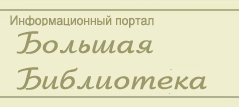Другое : What is Temperature?
What is Temperature?
What
is Temperature?
In a
qualitative manner, we can describe the temperature of an object as that which
determines the sensation of warmth or coldness felt from contact with it.
It is
easy to demonstrate that when two objectsof the same material are placed
together (physicists say when they are put in thermal contact), the object with
the higher temperature cools while the cooler object becomes warmer until a
point is reached after which no more change occurs, and to our senses, they
feel the same. When the thermal changes have stopped, we say that the two
objects (physicists define them more rigorously as systems) are in thermal
equilibrium . We can then define the temperature of the system by saying that
the temperature is that quantity which is the same for both systems when they
are in thermal equilibrium.
If we
experiment further with more than two systems, we find that many systems can be
brought into thermal equilibrium with each other; thermal equilibrium does not
depend on the kind of object used. Put more precisely,
if
two systems are separately in thermal equilibrium with a third, then they must
also be in thermal equilibrium with each other,
and they all have the same temperature regardless of the kind of systems
they are.
The
statement in italics, called the zeroth law of thermodynamics may be restated
as follows:
If
three or more systems are in thermal contact with each other and all in
equilibrium together, then any two taken separately are in equilibrium with one
another. (quote from T. J. Quinn's monograph Temperature)
Now
one of the three systems could be an instrument calibrated to measure the
temperature - i.e. a thermometer. When a calibrated thermometer is put in
thermal contact with a system and reaches thermal equilibrium, we then have a
quantitative measure of the temperature of the system. For example, a
mercury-in-glass clinical thermometer is put under the tongue of a patient and
allowed to reach thermal equilibrium in the patient's mouth - we then see by
how much the silvery mercury has expanded in the stem and read the scale of the
thermometer to find the patient's temperature.
Список литературы
Для
подготовки данной работы были использованы материалы с сайта http://eo.ucar.edu/
|


